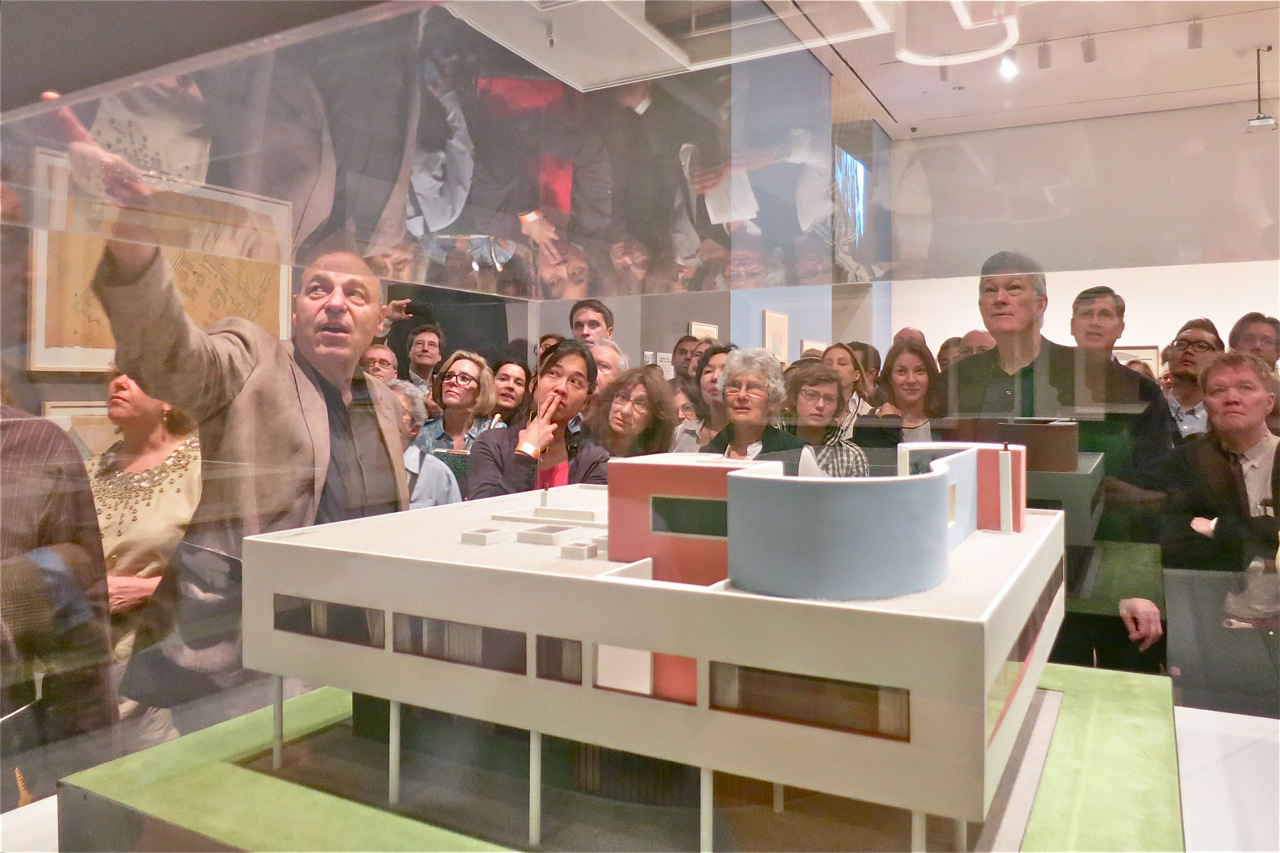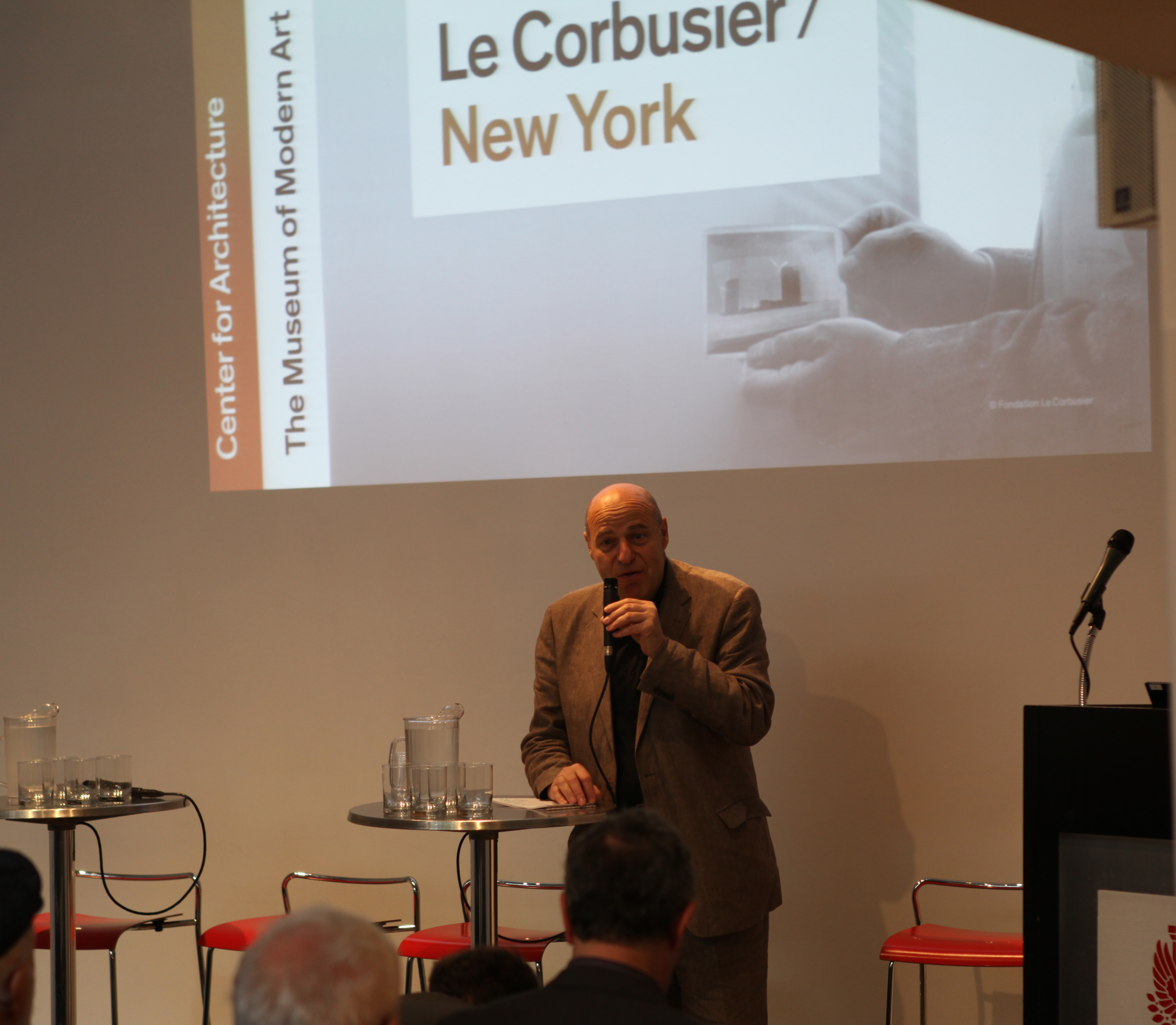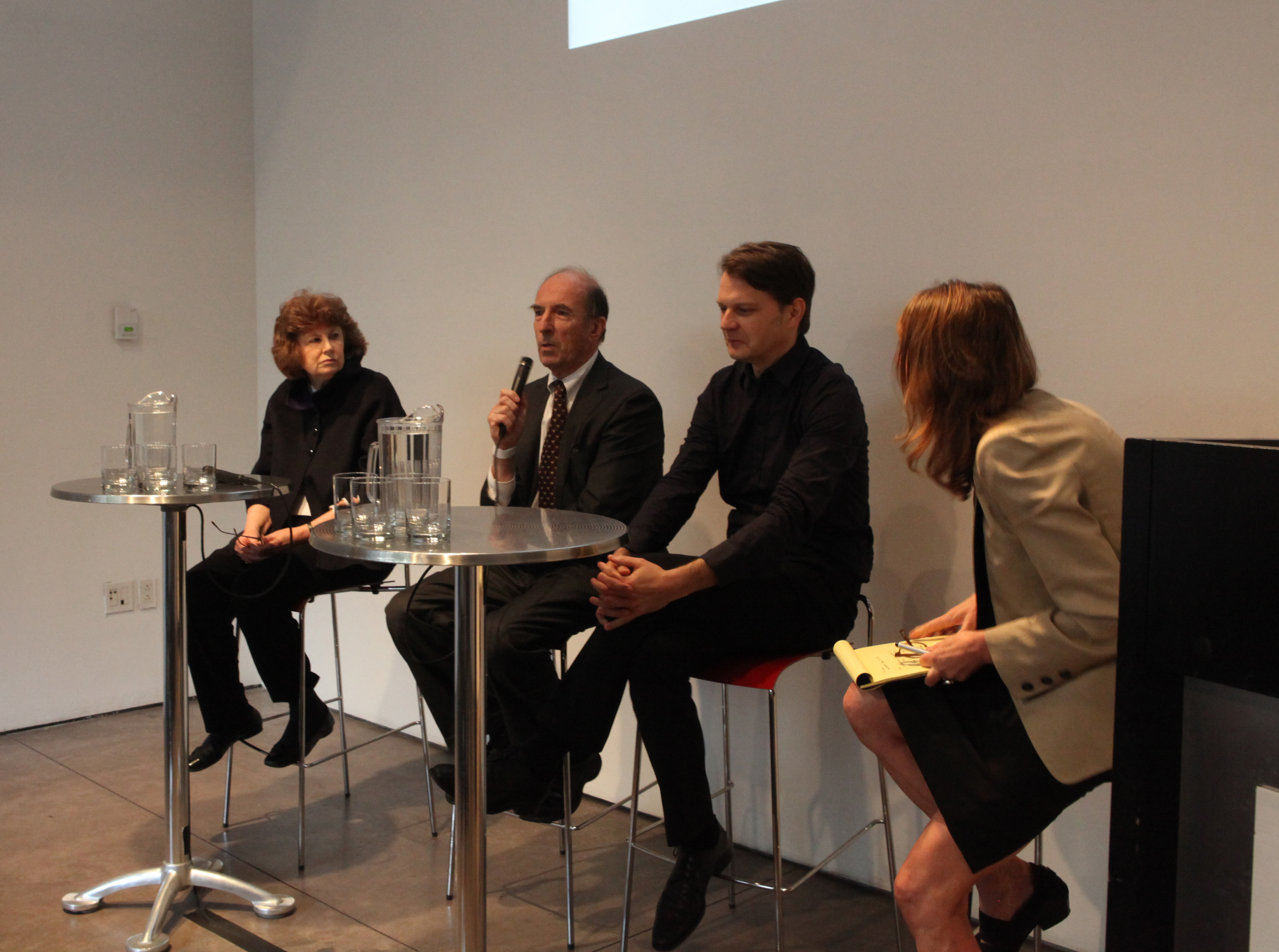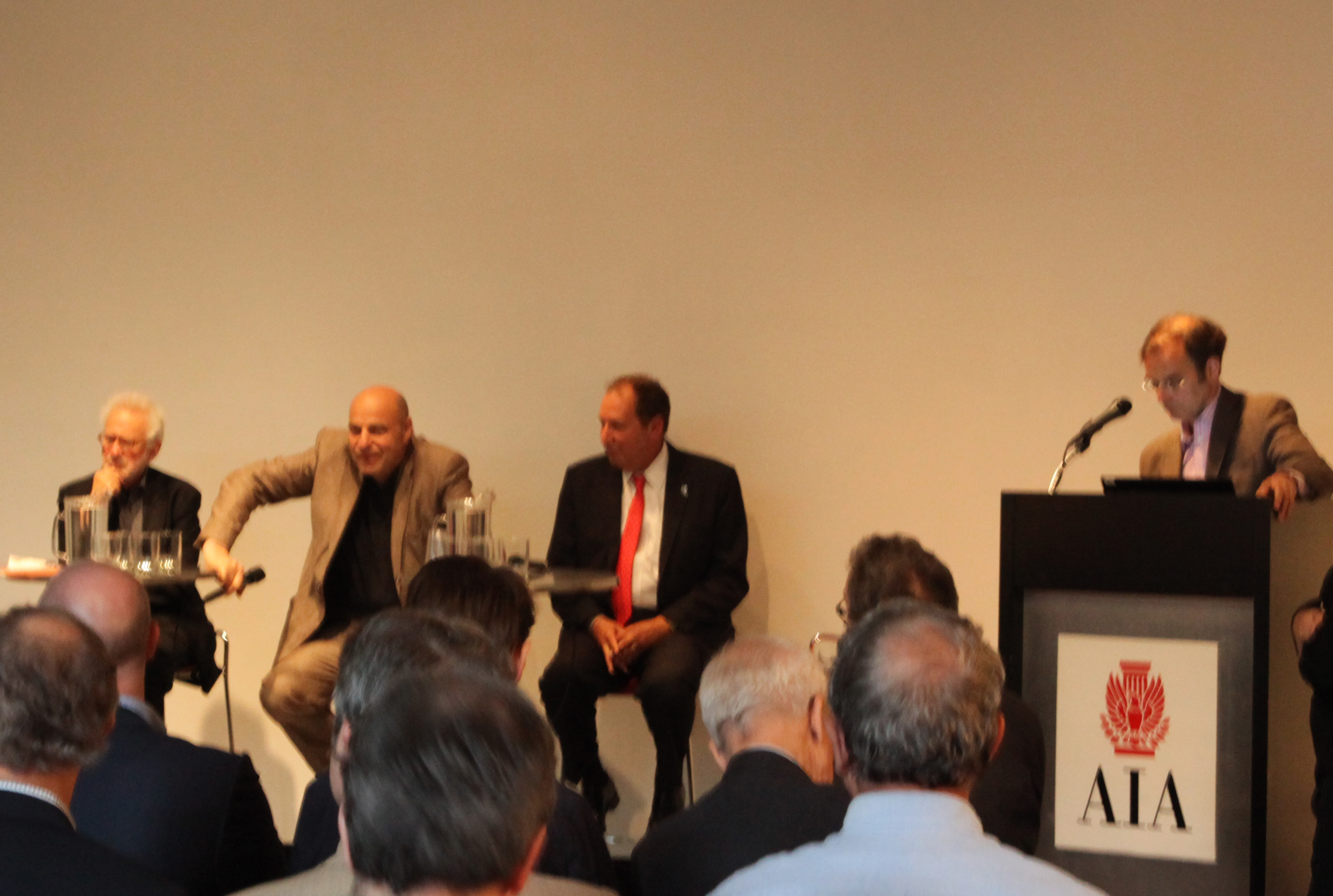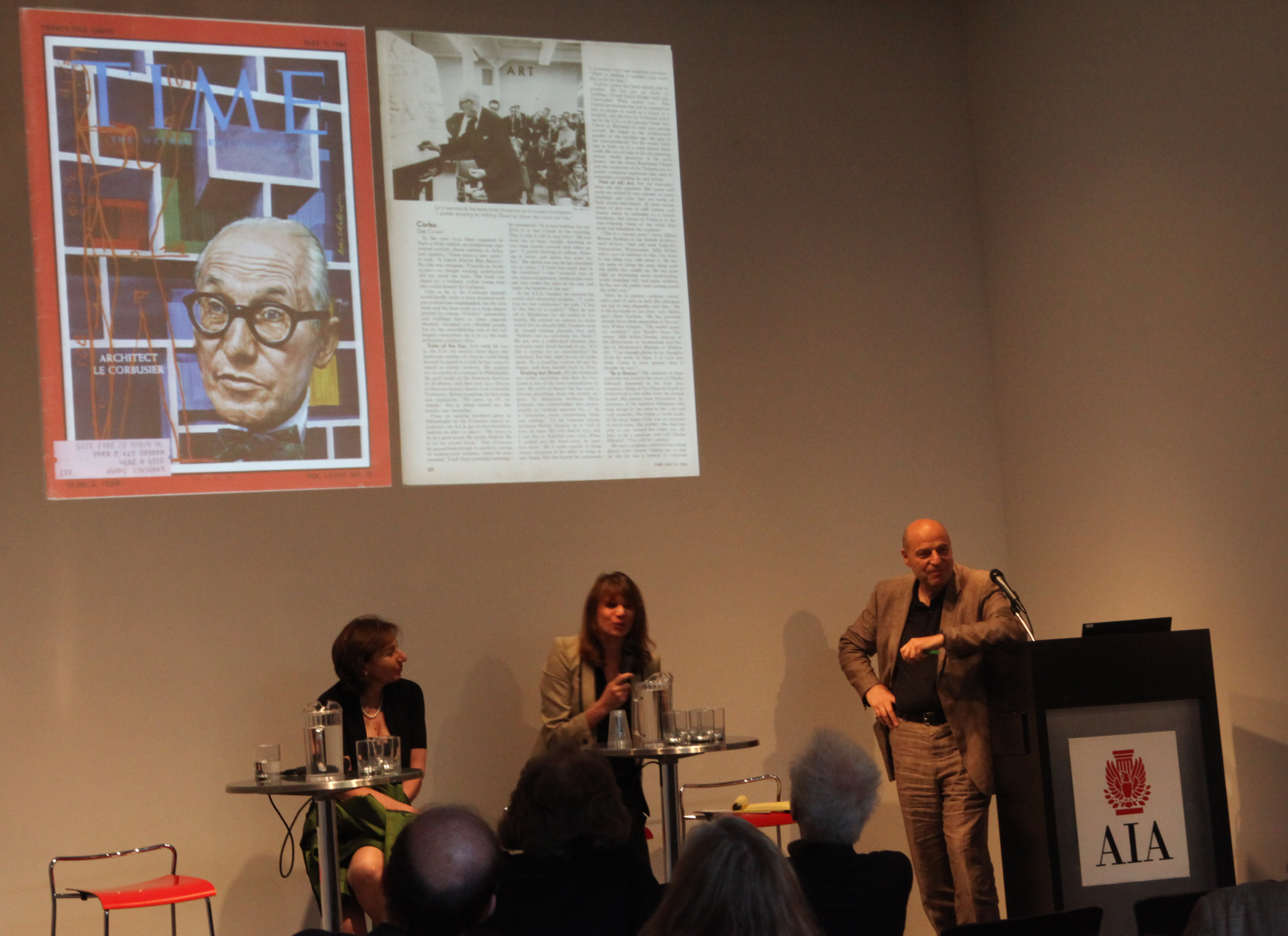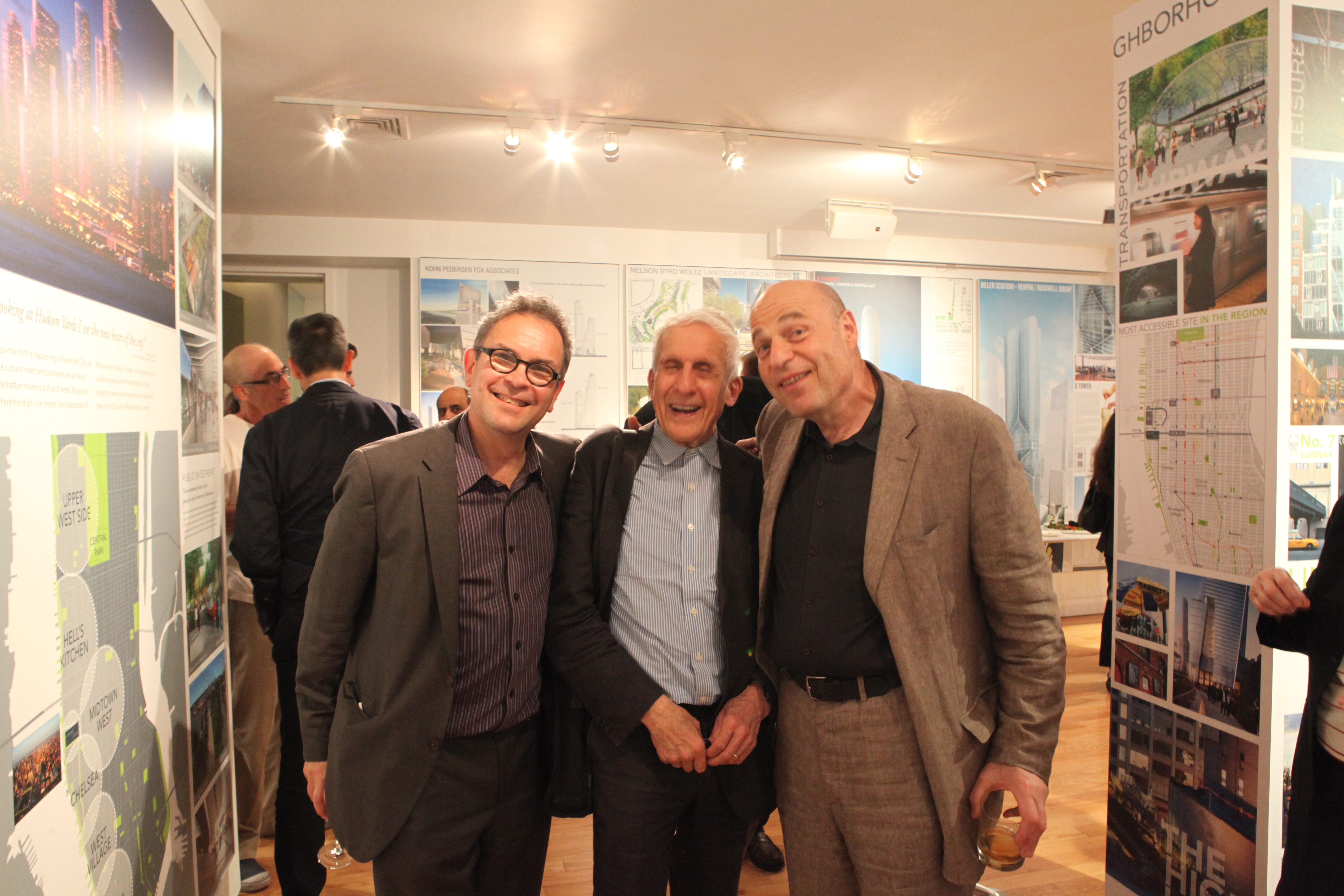by: ac
On the weekend of 06.08-09.13, the Center for Architecture and The Museum of Modern Art orchestrated “Le Corbusier/New York,” an ambitious and exhilarating symposium centered on the great work of Le Corbusier. The symposium itself was bookended by a visit to newly-opened exhibition “Le Corbusier: An Atlas of Modern Landscape” at MoMA, and a visit to recently-renovated rooms at the United Nations. The symposium was embroidered with a panel of admired thinkers who study the architect. Scholarship spanned from the forensic research by Patrick Leitner on the impact Le Corbusier’s hometown La Chaux-du-Fonds had on his creative development, to gossipy, humorous tidbits about his interaction with female Vassar College undergraduates, and his rock star status with the “Amazons” (possibly having no historic truth except in Le Corbusier’s mind.)
The Saturday morning tour of the MoMA exhibition was a fabulous way to start a New York Saturday. Jean-Louis Cohen’s presence was commanding, shepherding the 100-plus attendees through the exhibition which he co-curated with Barry Bergdoll, establishing a clear and potent thesis that the concept of landscape is how Le Corbusier crafted his entire body of work. This was particularly evident in his painting compositions and the immensity of Chandigarh.
The exhibition is a stunner. The breadth of work is precise in curation with two outstanding parts of Le Corbusier’s practice coming forward: the reconstruction of four interiors and his large-scale lecture drawings. Unfortunately, the reconstructions lacked the material depth of the original rooms (Le Petit Cabanon in particular), but Le Corbusier’s preoccupation with the choreography of life is evident, as is the framing of the landscape. His hand drawings point to a dying skill in the profession, that if resurrected could reestablish the designer as an alchemist and not just an expeditor.
The symposium staged at the Center for Architecture was a day of thought-provoking scholarship. The central theme of Le Corbusier in New York was best set forth by Mardges Bacon, who established that there were three phases of Le Corbusier’s relationship to New York City: first, he romanticized the city to his own end; next, his visceral response to New York, crowning it an “enchanted catastrophe” while wandering the clubs of Harlem and wishing the skyscrapers were bigger; and finally, the New York that looks like a ripe possibility for commissions and innovative but unrealized ideas. This theme of his disappointment with the city hung over the scholars’ panel and possibly derailed a conversation about what is collaboration and what is appropriation. The symposium’s graphic showing Le Corbusier with a photograph of his UN model in front of the UN itself illustrated the auteur-verses-committee conflict.
Mary McLeod, the warmest presenter, gets credit for establishing a new style – “limp Modernism” – when discussing the student work at Columbia in the 1960s. She also relayed the importance of Le Corbusier’s lecture drawings during his 1961 visit to the school. Francesco Passanti walked us through the impact of New York on Le Corbusier’s thinking about la Ville Contemporaine, and wowed the audience with a side-by-side comparison of the Contemporaine with a court festival at Versailles. Marida Talamona discussed Le Corbusier’s easy friendship with Tino Nivola and their sculptural endeavors on Long Island.
Possibly the most enjoyable presentation was the freewheeling exposition of Stanislaus von Moos, who detailed Le Corbusier’s flirtation with the tenets of Surrealism. Like Corb the visual thinker, von Moos deconstructed the cover of When the Cathedrals Were White; pondered Le Corbusier’s fascination with the George Washington statue at Wall Street a la de Chirico; and proposed that the ramps of Villa Savoy, Villa Church, and the Carpenter Center owe a debt of gratitude to Le Corbusier’s experience with NYC’s elevated trains.
Were von Moos’ suppositions great illuminations of Le Corbusier scholarship? Perhaps not, but the thinking was nimble and delightful and a new filter.
An audience member asked, “Why we don’t see the impact of Le Corbusier in the American built environment?” Shamefully, not one of us (practitioners) raised our hand and said: “I look at Le Corbusier every day!”
There is no other way to get through the dense and spatially complex work of New York interiors without seeing Corb. With Cohen’s deliberate inclusion of Le Corbusier’s interiors and the dynamic AIANY Interiors Committee present (a co-sponsor of the event), I found it odd that the conversation did not come up.
The Center for Architecture can also always be counted on for star power at these events. Peter Eisenman, FAIA, discussed Cornell, Colin Rowe, and the work of the New York Five, but when crediting Le Corbusier as a source, Terragni and de Stijl was said to play just as important a role. Eisenman did make the most Tweetable statement of the day: “The MoMA show will bring renewed interest into what Le Corbusier means and spark a return to Architecture.” Let’s hope so.
At the end of the day Kenneth Frampton wrapped the events into an elegant package, but not without answering a young writer’s query about the harm Le Corbusier’s work has done, stating that “to blame Le Corbusier for the failures of public housing is reductive.”
Wrapping up the symposium, Assistant Secretary-General and Executive Director of the Capital Master Plan of the United Nations Michael Adlerstein led a tour of the UN. Adlerstein abandoned the mournful stance that Le Corbusier was not involved enough, instead positing that he, by virtue of his age, was a natural leader for the group and had an enduring impact on the project.
Alderstein’s task of modernizing the UN – an icon of Modernism – makes for a fascinating tale. He lovingly held court in each room, and described the perils of the refurbishment: the formidable foe of tobacco smoke; a deep desire to reduce the carbon footprint of the buildings; and the uncomfortable subject of security in light of terrorism.
But with all this performance-oriented pragmatism, Adlerstein still described a method of thinking about rooms that promotes the highest human ideals. The crescent moon table in the Security Chamber was not to be touched – the shape fosters dialogue, and therefore could someday prevent WWIII. The beautifully-designed Finn Juhl Trusteeship Chamber changed its function since colonial rule is no longer an issue.
These moments are Le Corbusier’s legacy: that the human condition can be manifested in built form.
Annie Coggan is a principal with Coggan and Crawford Architects, and teaches at the Fashion Institute of Technology and the School of Visual Arts in New York City.
Event: Le Corbusier/New York
Location: Museum of Modern Art, New York, Center for Architecture, United Nations, 06.08-09.13
Speakers: Complete Le Corbusier/New York” program details are available here.
Organizers: Center for Architecture and the Museum of Modern Art, New York
Co-sponsored by: AIANY Interiors Committee, AIANYCultural Facilities Committee and AIANY Historic Buildings Committee








